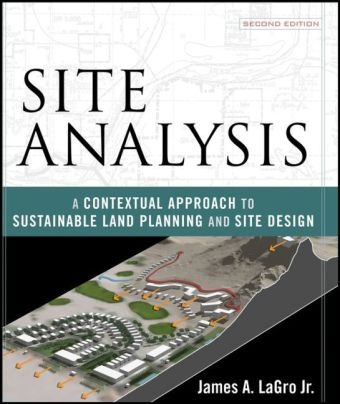Read more
Offers a contextual approach to land planning and site design by blending theory and methods from the fields of landscape architecture, urban planning, architecture, and urban design. * Breaks down the entire design process, from preliminary studies to implementation, in a way that is easy for readers to follow.
List of contents
Preface. Acknowledgements. PART I: PROCESS AND TOOLS. Chapter 1: Shaping the Built Environment. Introduction. Toward Sustainable Built Environments. The Power of Place, The Role of Design. The Site Planning Process. Conclusion. Chapter 2. Visualization of Spatial Information. Introduction. Graphic Communication. Mapping Fundamentals. Principles of Effective Graphic Communication. Base Maps. Geographic Information Systems (GIS). Conclusion. PART II: SITE SELECTION AND PROGRAMMING. Chapter 3. Site Selection. Introduction. Site Selection Scope. The Site Selection Process. Conclusion. Chapter 4. Programming. Introduction. Programming Methods. Program Documentation. Conclusion. PART III: SITE INVENTORY AND ANALYSIS. Chapter 5. Site Inventory: Physical Attributes. Introduction. Parcel Size and Shape. Topography. Geology. Hydrology. Soils. Climate. Hazards. Conclusion. Chapter 6. Site Inventory: Biological Attributes. Introduction. Vegetation. Wildlife. Conclusion. Chapter 7. Site Inventory: Cultural Attributes. Introduction. Land Use and Tenure. Land Use and Tenure. Property Value. Land Use Regulation. Infrastructure. Building Typology. Historic Resources. Perceptual Quality. Conclusion. Chapter 8. Site Analysis: Integration and Synthesis. Introduction. Spatial Analysis Fundamentals. Site Opportunities. Site Constraints. Site Development Capacity. Suitability Analysis. Integration and Synthesis. Conclusion. PART IV: DESIGN AND IMPLEMENTATION. Chapter 9. Conceptual Design. Introduction. Sustainable Site Planning. Design Determinants . Creativity and Conceptual Design. The Conceptual Design Process. Anatomy of a Concept Plan. Concept Plan Graphics. Concept Evaluation and Refinement. Conclusion. Chapter 10. Design Development. Introduction. Design of the Built Environment. Design Theory. Open Space. Circulation Systems. Buildings. Conclusion. Chapter 11. Project Implementation. Introduction. Mitigating Development Impacts. Construction Documents. Construction Administration. Public Review and Approvals. Conclusion. Appendix. Glossary. References. Index.

